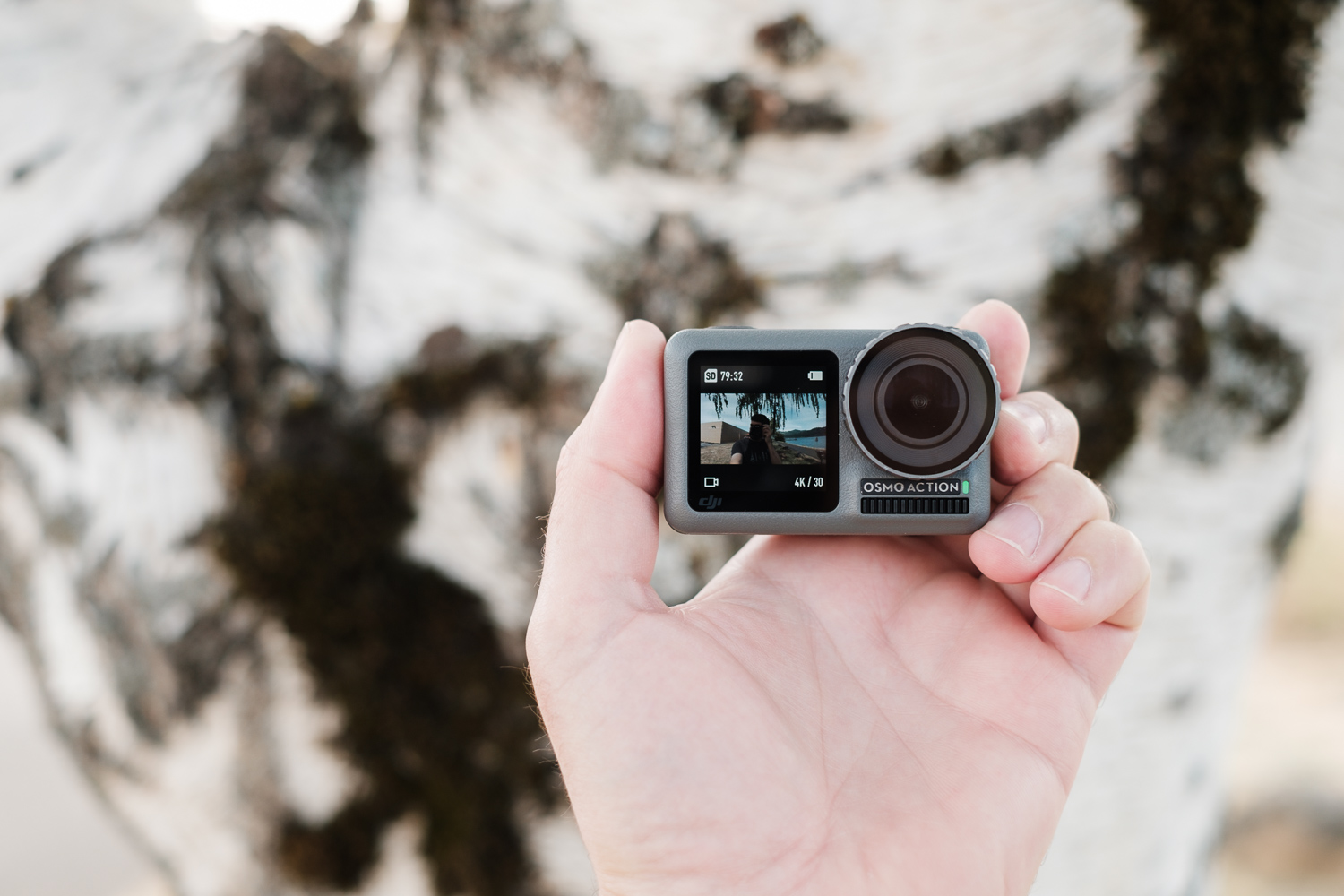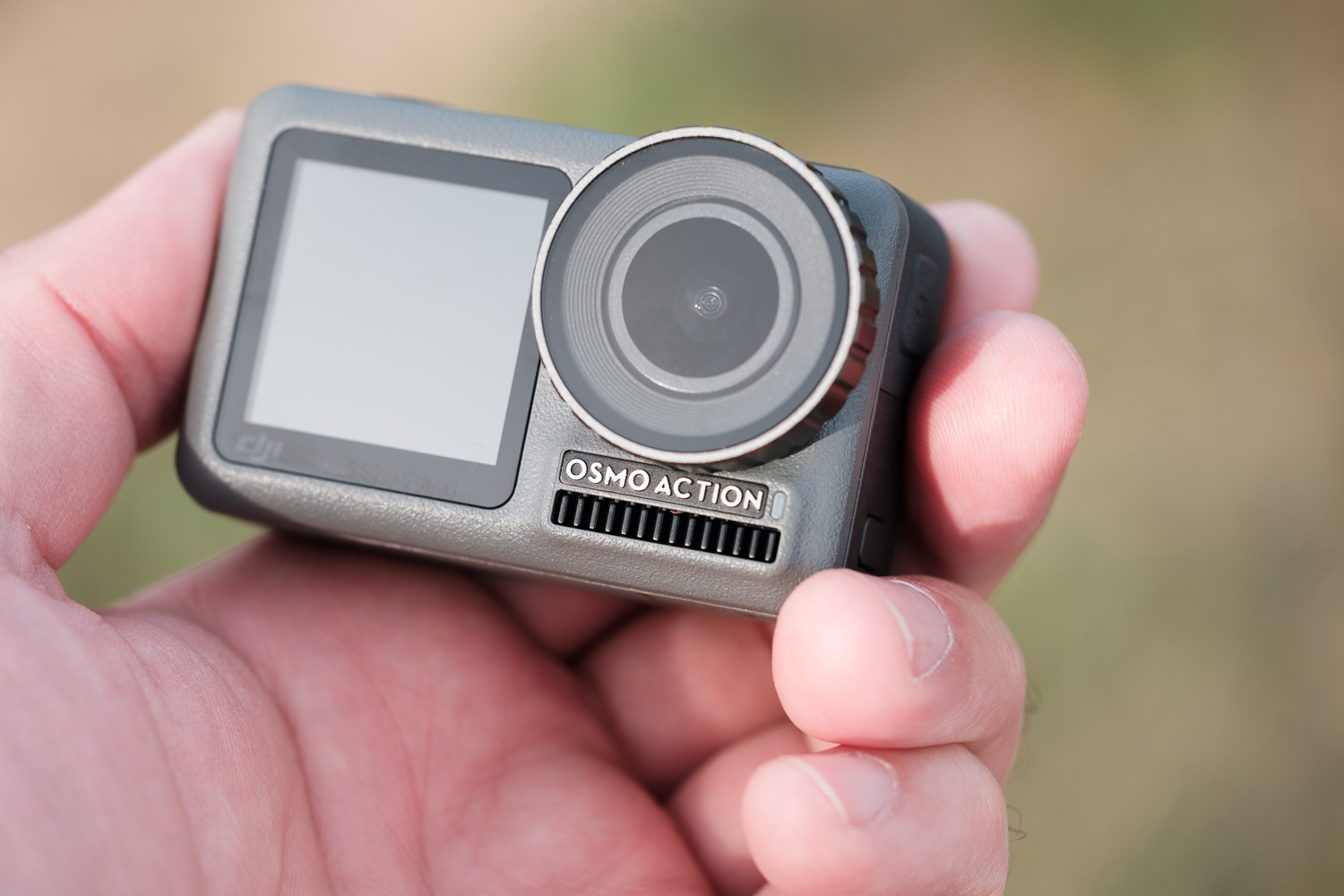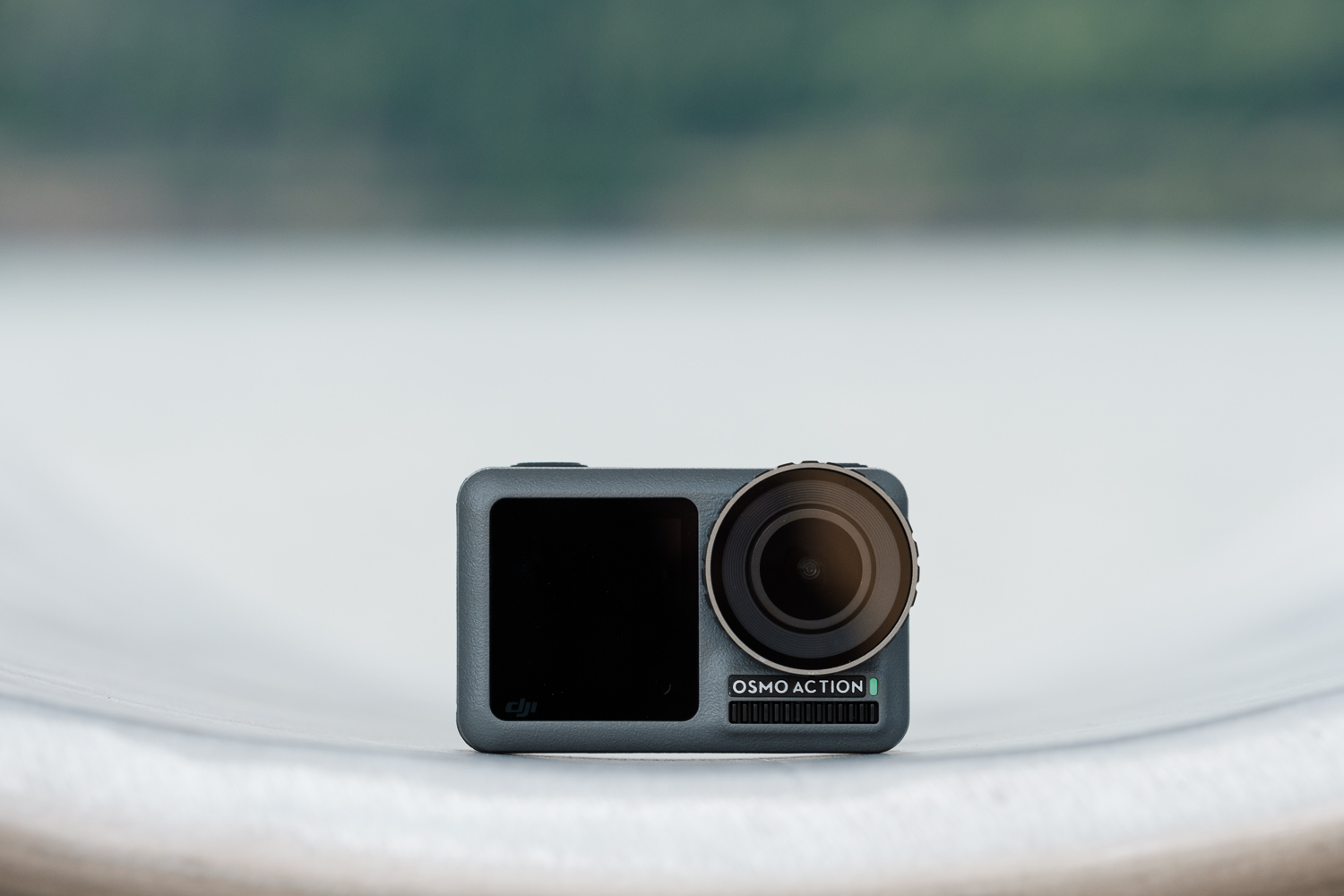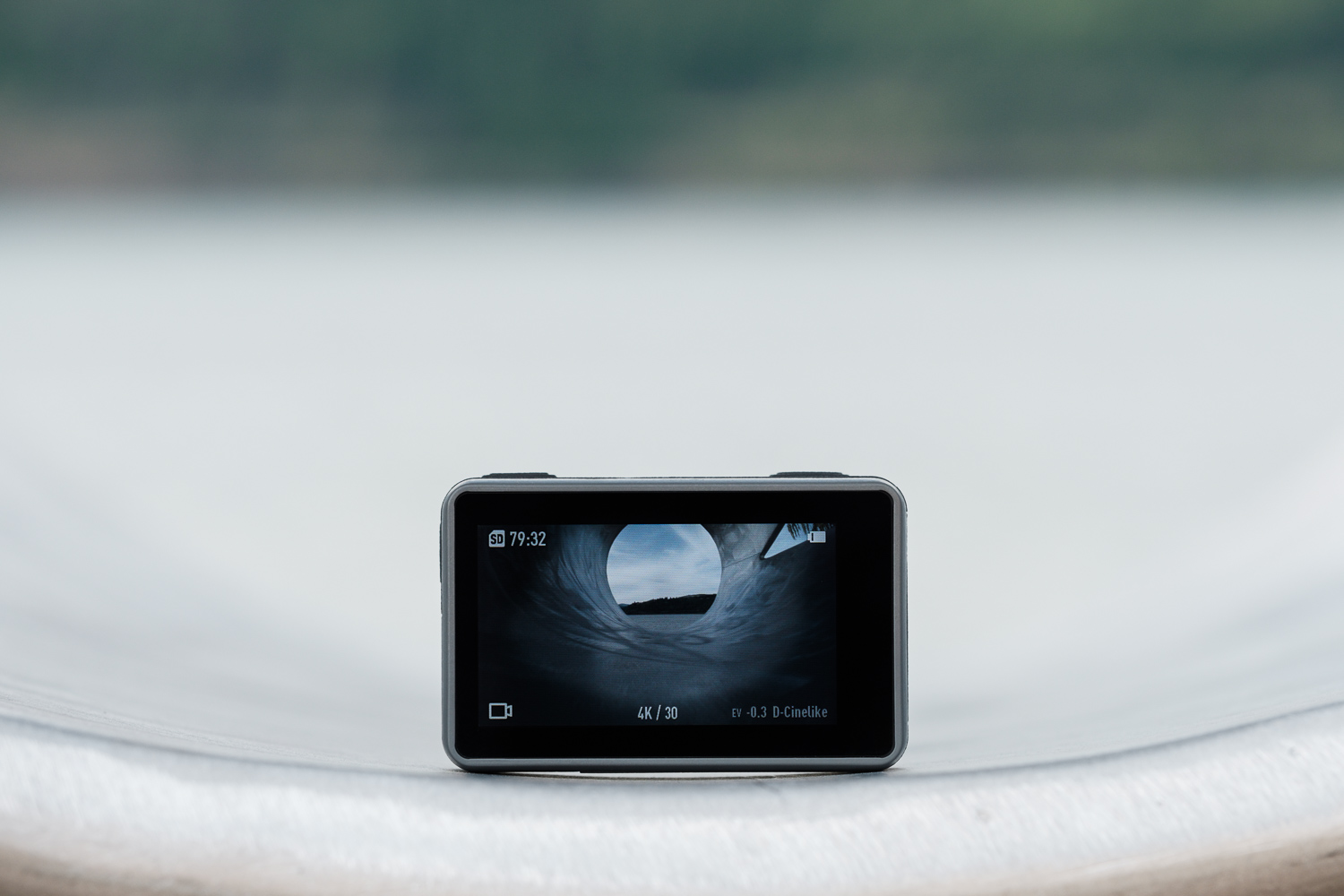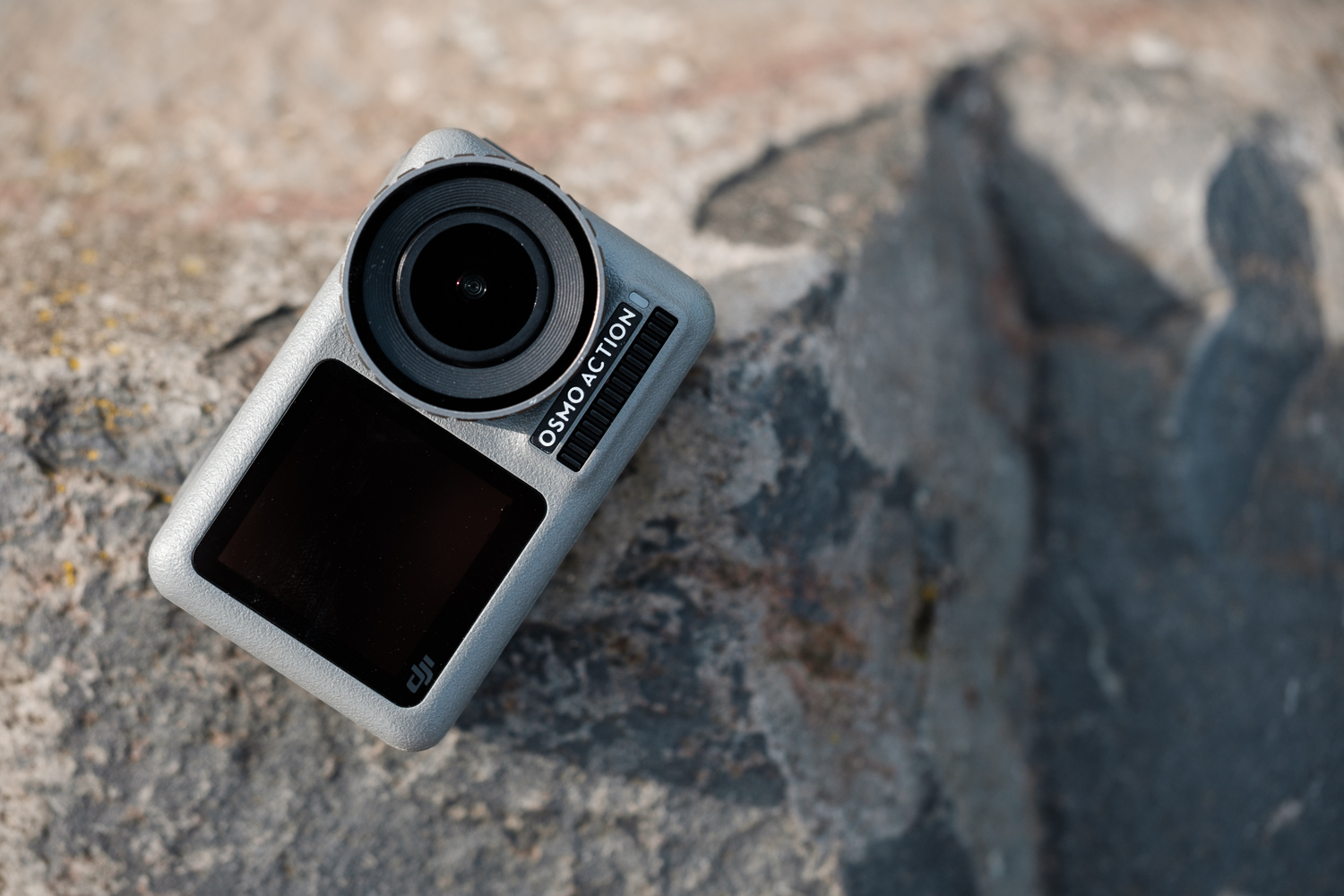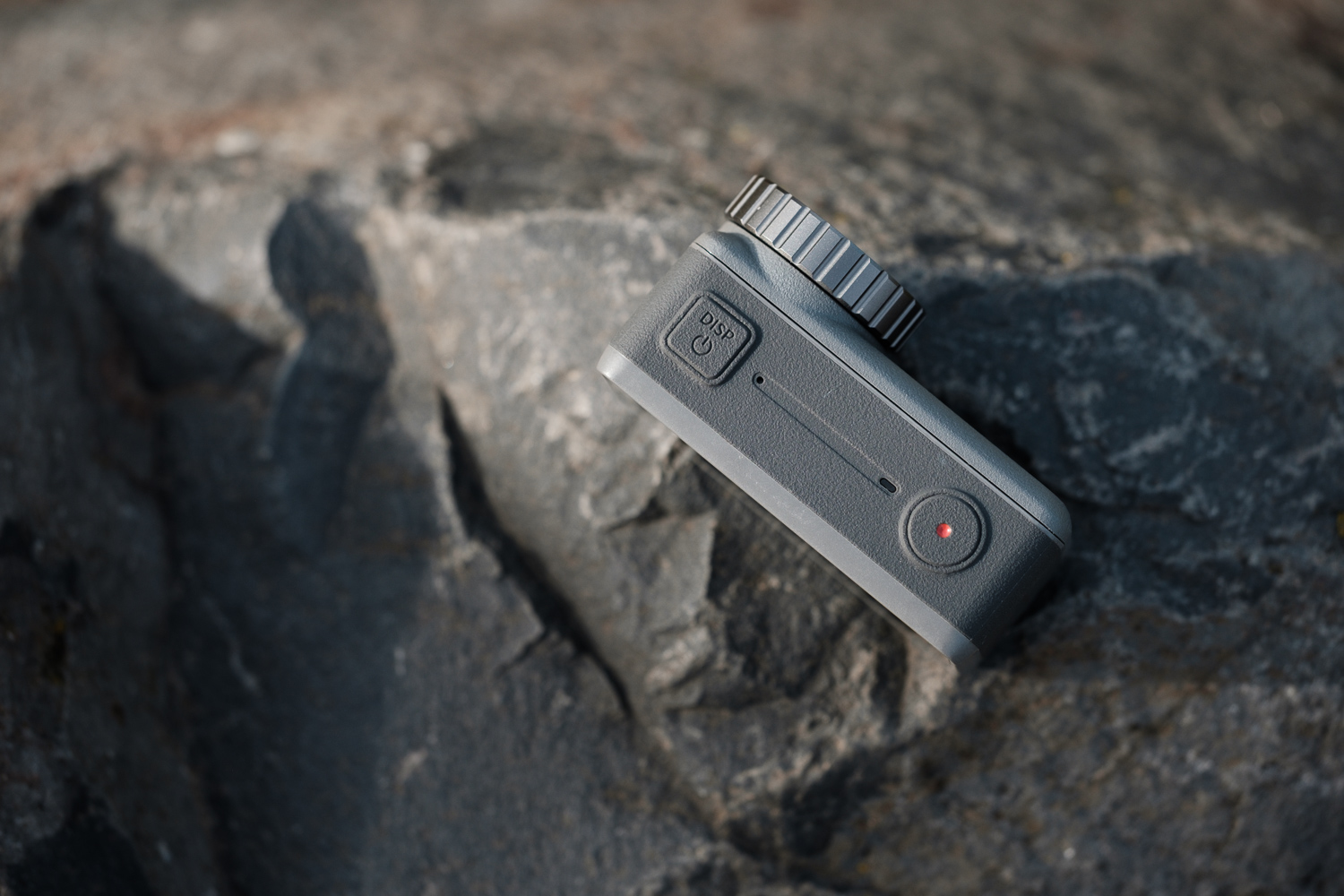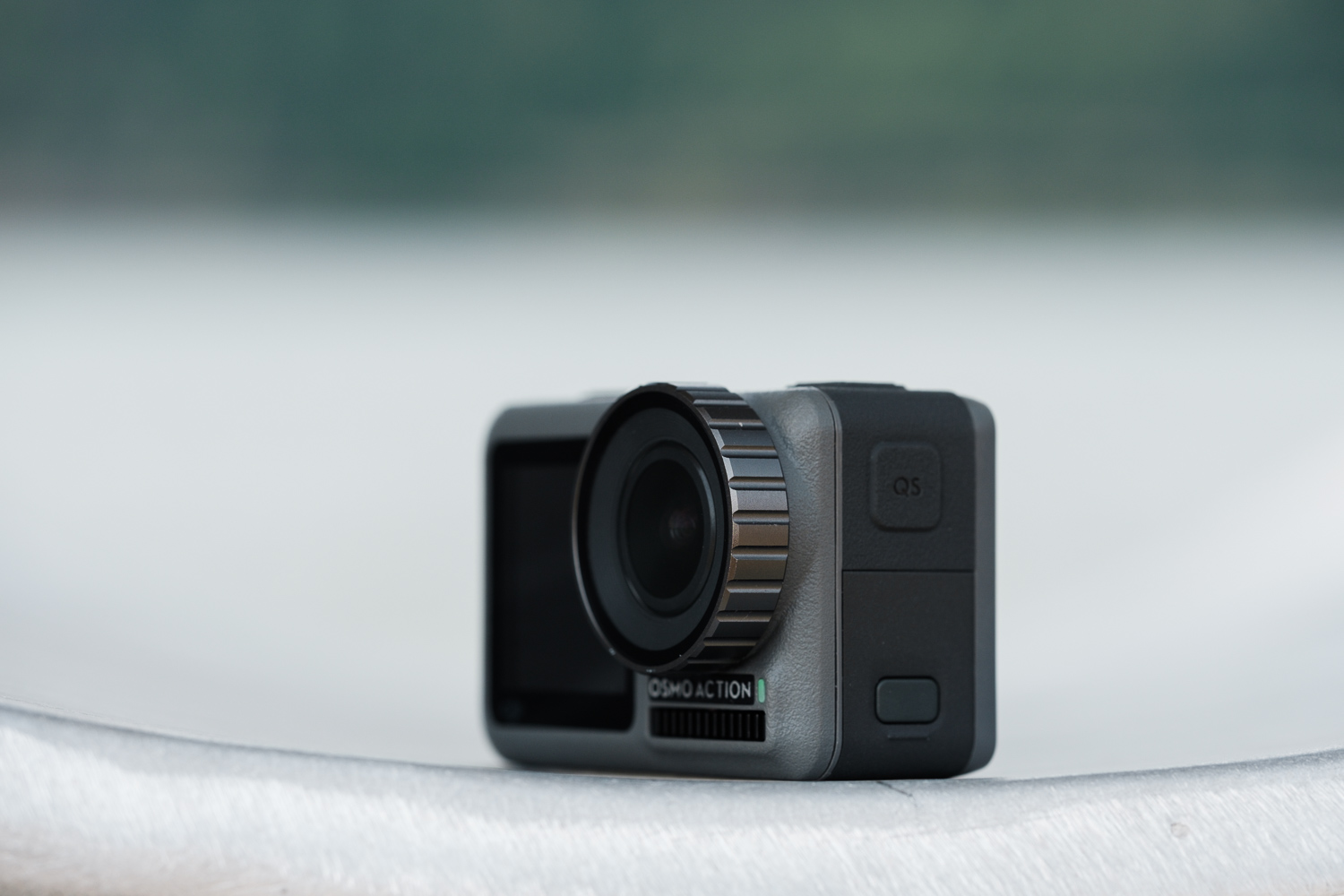DJI is expanding into new territory on Wednesday, May 15, with the Osmo Action, a waterproof action camera with both front and rear LCD screens and electronic image stabilization. The boxy, gray camera is a direct competitor to the GoPro Hero7 Black, with a similar design and user interface, and capable of recording 4K video at up to 60 frames per second. Like most action cameras, it is also compatible with the GoPro mount system. It is available now for $349, $50 less than the GoPro Hero7 Black.
The Osmo Action is DJI’s first attempt at a true action camera. Best known for its drones, like the popular Mavic 2 series, the company previously avoided competing in the action cam segment; the closest thing it made to an action camera before now was the Osmo Pocket, a handheld gimbal camera. While largely imitative, the Osmo Action has a couple unique features that may give it an edge.
The second LCD screen on the front of the camera is much more than the basic status display found on the GoPro Hero7 Black. With it, you can check the framing of your shot even when mounting the camera in places that make the primary, rear screen inaccessible. The front screen, however, is much smaller than the rear screen, measuring 1.4 inches diagonally, and features a tall 1:1 ratio rather than the standard 16:9 widescreen ratio. You can choose whether it displays video in a letterboxed format, or full screen with cropped sides. It will also display vital information such as time remaining on the SD card, battery life, and the current camera mode and resolution settings.
Another unique feature is support for interchangeable filters that screw in around the lens. You can swap in a polarizer, underwater filter, or neutral density filter easily. Neutral density filters are great for action cameras, which are often used outdoors on sunny days, as they cut back light and allow for a slower shutter speed, resulting in smoother, more natural looking video.
The Osmo Action does not inherit a 3-axis gimbal, something fans may have been expecting from the company that puts a gimbal in every one of its other camera products. Instead, the action camera uses fully electronic stabilization dubbed RockSteady. Like other EIS systems, this crops the footage slightly, but will yield much smoother results. RockSteady looks to be a viable competitor to GoPro’s excellent HyperSmooth stabilization in the Hero 7.
Users can record 4K video up to 100 megabits per second in either standard or D-Cinelike color profiles, the latter being useful for preserving more dynamic range. HDR video is also available, although it is does not work with RockSteady stabilization. Still images are captured at 12-megapixel resolution in either JPEG or RAW formats.
Digital Trends has spent a few days with the Osmo Action and you can read our first impressions in our hands-on review.
